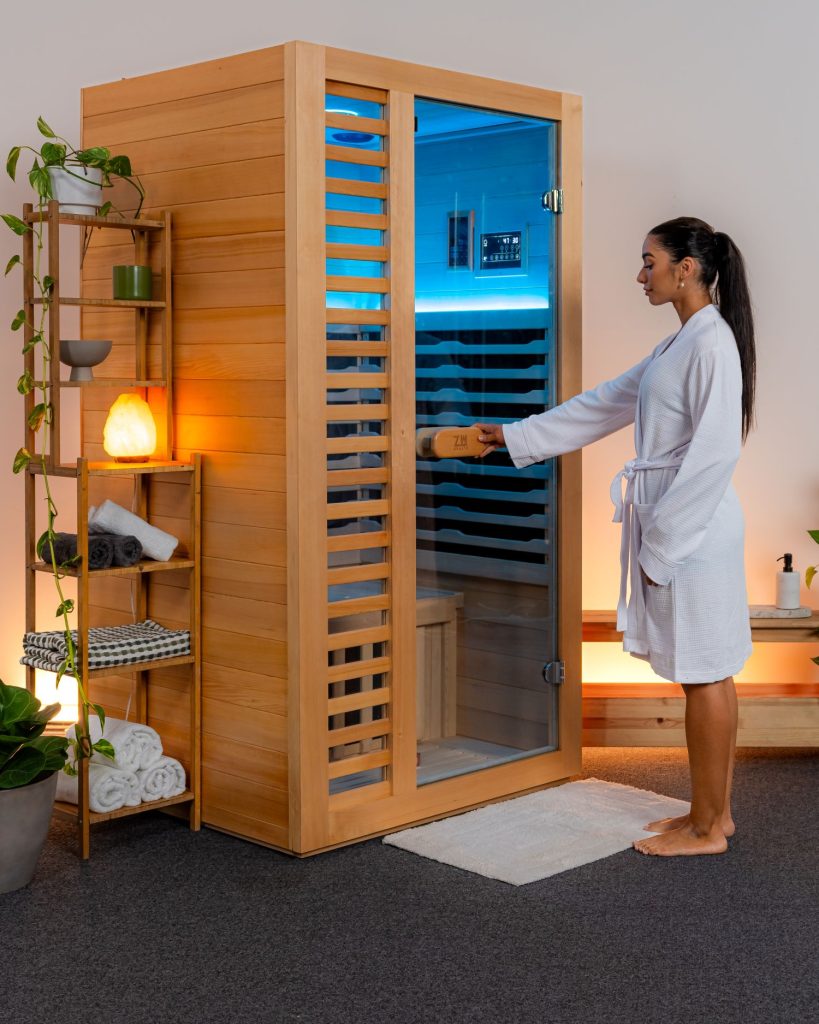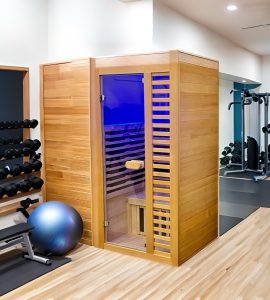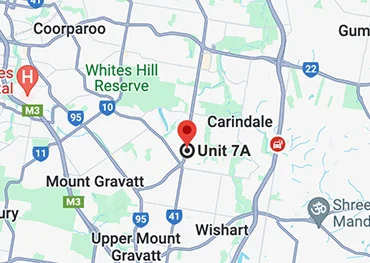
At Zua Health, one of the most common questions we get is:
“Why are your infrared saunas more affordable than others?”
It’s a great question—and one we’re happy to answer.
The world of infrared saunas can be confusing. Prices can vary wildly between brands, and understandably, customers want to know whether a lower price means lower quality. The short answer? Not necessarily. In fact, many saunas on the market are overpriced, and some cheaper models are poorly made. The key is understanding what goes into the price tag—and what doesn’t.
Let’s break down the major factors that influence the cost of an infrared sauna, and explain how Zua Health keeps our prices fair without compromising on quality.
Most infrared saunas are made from Canadian Hemlock, a strong, attractive timber widely used for indoor furniture. It’s durable, safe for high-heat applications, and cost-effective—making it an excellent choice for home saunas.
More expensive saunas may be built using Western Red or Canadian Cedar, which can significantly increase the price. While cedar has a pleasant aroma and natural resistance to mildew, it’s not necessarily better for indoor saunas or longevity. Unless you’re using a sauna outdoors or have specific allergies, Hemlock is a great option that won’t compromise your experience.
At Zua Health, we offer Hemlock saunas that are designed to last, without charging a premium for cedar unless it’s truly required.

There’s a big difference between carbon-only heaters and full spectrum infrared panels. Full spectrum saunas emit near, mid, and far infrared wavelengths, providing a more comprehensive range of therapeutic benefits. Naturally, these panels are more expensive than basic carbon panels.
In addition to panel type, the number and placement of heating panels also affects cost and effectiveness. Some brands cut corners by using fewer panels or poorly positioning them. At Zua Health, we ensure optimal placement and coverage—giving you a complete infrared experience from every angle.

Not all saunas are created equal when it comes to extra features. Here are a few things that can drive up the price:
Bluetooth and built-in speakers
Touchscreen control panels
Thicker glass for insulation and soundproofing
Tinted or privacy glass
Ultra Low EMF technology
Ultra Low EMF panels are often marketed heavily and do add to cost. However, most of the time these are not full spectrum saunas—so while the EMF is lower, you may miss out on some of the key health benefits of full-spectrum infrared light. In many cases, the additional EMF safety doesn’t justify the cost difference, especially when EMF levels are already well below harmful thresholds.
Zua Health’s saunas are designed with safety and performance in mind, using panels that maintain safe EMF levels, without sacrificing therapeutic value.
Many sauna companies charge more simply because of how they market themselves.
They may pay high-profile influencers, athletes, or celebrities to promote their products. While this kind of endorsement can be impressive, it adds substantial marketing costs that are passed onto you—the customer. The sauna might look premium, but in reality, you’re paying for the name, not necessarily the build quality.
At Zua Health, we prefer to let our products speak for themselves, backed by real-world results and customer satisfaction—not flashy marketing gimmicks.
Here’s where Zua Health truly stands apart.
Many sauna companies operate with high overhead costs: warehouses with large rent bills, sales staff with wages and commissions, expensive retail space, and high-profit expectations.
At Zua Health:
We have our own warehouse, so we don’t pay rent.
We share retail space with other health and fitness operations, minimizing rental obligations.
We operate with a lean team, keeping our labor costs down.
We maintain a modest profit margin, passing the savings on to you.
We’ve been importing and sourcing products for over 20 years, allowing us to negotiate better pricing and buy in bulk.
All of this adds up to significant savings—which we choose to pass on to our customers instead of inflating our prices.
When shopping for an infrared sauna, it’s important to look beyond the price tag. Some low-cost saunas are genuinely poor quality—made with substandard materials. On the other hand, some high-priced models are overhyped and overpriced, with no real benefits to justify the cost.
At Zua Health, we believe in value and transparency. The majority of our saunas are built with high-grade materials, full-spectrum heating technology, essential features, and safety in mind. We cut costs where it makes sense—in overheads, not in quality.
When you’re investing in your health and well-being, the last thing you want is to be misled by marketing or pay more than you need to.
We encourage all customers to ask questions, compare features, and look at what really matters—the timber, the heating technology, the EMF ratings, the number of panels, and the company’s background.
Zua Health is proud to offer premium infrared saunas at fair prices, backed by decades of experience and a passion for holistic wellness.
Honest pricing. Real quality. No gimmicks.
Have questions? We’re here to help. Reach out anytime and let’s find the right sauna for you.

Contact us now for more information about our products or to book an appointment with a consultant, either by phone or in person.

15 Gateway Dr
Biggera Waters QLD 4216
Monday – Friday: 9:00am – 5:00pm
Saturday: 9:00am – 4:00pm
Sunday: 9:00am – 2:00pm

7/429 Creek Rd
Mt Gravatt QLD 4122
Monday – Friday: 9:00am – 5:00pm
Saturday: 9:00am – 4:00pm
Sunday: 9:00am – 2:00pm

2/306 Gympie Rd
Strathpine QLD 4500
Monday – Friday: 9:00am – 5:00pm
Saturday: 9:00am – 4:00pm
Sunday: 9:00am – 2:00pm

657 Ruthven St
Toowoomba QLD 4350
Monday – Friday: 9:00am – 5:00pm
Saturday: 9:00am – 4:00pm
Sunday: 9:00am – 2:00pm

SHOP 7 13-15 Glasson Dr
Bethania QLD 4205
Monday – Friday: 9:00am – 5:00pm
Saturday: 9:00am – 4:00pm
Sunday: 9:00am – 2:00pm